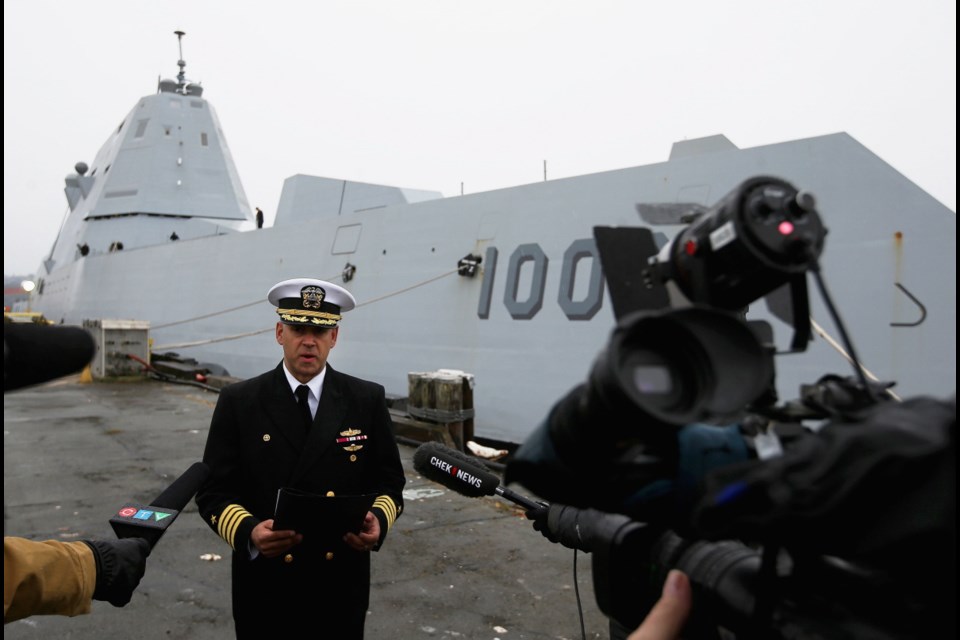USS Zumwalt, one of the newest and most advanced ships in the U.S. navy, made CFB Esquimalt its first foreign port visit on Monday.
Classed as a destroyer but fast enough and carrying firepower to serve as a heavier cruiser, Zumwalt is notable for its stealth design, radar-foiling slanted ship sides and geometric angles. Crew members said the ship’s radar profile is equivalent to a small fishboat.
Ship commander Capt. Andrew Carlson said Zumwalt and its crew of about 140 will be in Victoria for training with the Royal Canadian Navy, but would not specify for how long.
“It’s really not our policy to discuss that kind of thing,” he said. “I wouldn’t be a very good stealth ship captain if I was to let that out.”
Zumwalt, the first of three of its kind planned, joined the U.S. Pacific Fleet in 2016. The ship’s home port is San Diego.
The ship is 600 feet long (about 183 metres), 84 feet wide (26 metres) and displaces 16,000 tonnes. By comparison, Royal Canadian Navy frigates are 131 metres long, 16 metres wide and displace 4,800 tonnes.
Carlson said what makes Zumwalt stand out design-wise is the variety of new systems all packed in one vessel — propulsion, communications, weaponry, radar and hull design are all cutting-edge.
Propulsion is provided by an electric motor, while two Rolls Royce gas turbines generate electricity for the motor and the entire ship, with generating capacity left over.
The extra power provides flexibility should the U.S. navy decide to install more power-hungry technology, such as electromagnetic rail guns.
Weaponry includes two 155-millimetre guns on the forward deck and 80 guided missiles arranged in cells around the perimeter of the upper deck. Zumwalt can deploy up to two helicopters from its rear deck.
Its design and $4.4-billion US cost have been controversial. MSNBC reported it was over-budget and delivered late.
But for Zumwalt sailors, the vessel represents the future of the modern navy.
Its crew is about half the size of the ones on the U.S. navy’s previous generation of destroyers. Crew sleep in rooms with one, two, or four bunks, each with its own bathroom. Only one room consists of 15 bunks.
Lt. Rochelle Rieger, U.S. Pacific Fleet spokeswoman, said the small cabins offer flexibility in accommodating men and women.
Zumwalt officer Lt. Briana Wildemann noted the ship is named after Admiral Elmo Zumwalt, who died in 2000 and was known for his innovative approach to navy operations.
Wildemann said that spirit of innovation continues on board the ship named for him.
With so many new systems and a relatively small crew, members work together in a way she likes to think is unique in the U.S. navy.
“We have to innovate and make sure we fill all the navy’s requirements, but we kind of have to do it on Zumwalt’s terms,” she said.
“So the culture on board ship is always: ‘How can we do this better?’ ” said Wildemann. “That goes from the most junior sailor all the way up.”



